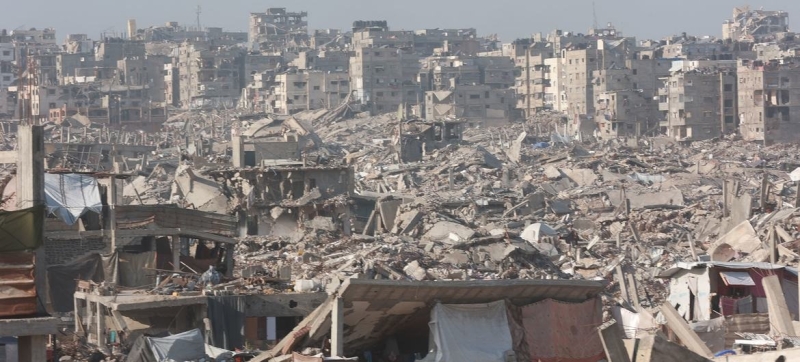- Dhaka Quake Leaves 10 Dead and Hundreds Injured |
- Fire at UN climate talks in Brazil leaves 13 with smoke inhalation |
- 5mmcfd gas to be added to national grid from Kailashtila gas field |
- ArmArmed Forces Day: Tarique's message draws on historic closeness |
- UNGA urges renewed int’l efforts for a resolution of Rohingya crisis |
Two Children Killed Daily in Gaza Despite Ceasefire

Ongoing attacks and airstrikes attributed to Israeli forces in Gaza continue to kill and maim people of all ages in the shattered enclave despite an agreed ceasefire, UN agencies said on Friday.
“Yesterday morning, a baby girl was reportedly killed in Khan Younis by an airstrike, while the day before, seven children were killed in Gaza City and the south,” said Ricardo Pires, spokesperson for the UN Children’s Fund (UNICEF).
What to know
UNICEF says 67 children have been killed during the ceasefire.
280 Palestinian deaths and 672 injuries have been reported since the pause began.
Families face extreme food shortages despite some market activity.
Gaza’s health system is collapsing, leaving children without care.
About 4,000 children need urgent medical evacuation.
In an update, Mr Pires told journalists: “There’s only one party to the conflict in Gaza with the firepower to carry out airstrikes.”
Since 11 October, the first full day of the pause in hostilities between the Israeli military and Hamas fighters, at least 67 children have been killed in “conflict-related incidents”, the UNICEF spokesperson said.
His comments came as Doctors Without Borders reported that a nine-year-old girl is receiving treatment for facial wounds after gunfire from quadcopter drones was reported on Wednesday.
Hundreds killed and injured
According to UNICEF, at least 67 children have been killed in “conflict-related incidents” since the Hamas-Israel pause in hostilities was announced on 10 October, at a rate of two a day.
Veteran UN aid worker Dr Rik Peeperkorn from the World Health Organization (WHO) echoed those concerns, adding: “Although there’s a ceasefire, people still get killed.”
Latest Gaza Ministry of Health data indicates that 280 people have been killed and 672 injured since the ceasefire, in addition to 571 bodies recovered from the rubble.
Alongside the ongoing insecurity, UN aid teams, including the World Food Programme (WFP), continue to push for greater access to Gazans, including hundreds of thousands of displaced and highly vulnerable families.
Trucks entering: ‘A step in the right direction’
WFP is now sending approximately 100 trucks per day into the enclave loaded with relief supplies — almost two-thirds of its daily target. This is “a step in the right direction,” said Abeer Etefa, WFP Senior Spokesperson for the Middle East, North Africa and Eastern Europe.
She noted that although commercial supplies are also crossing into Gaza, many food shipments remain stuck at border points for days, increasing the risk of spoilage.
From inside Gaza, WFP Head of Communications in Palestine Martin Penner described the dire situation confronting exhausted residents after more than two years of war.
“One woman told us she feels like her whole body is crying out for different kinds of food — anything other than the canned and dry rations people have been living on for two years,” he said.
Prices ‘out of reach’
Markets in Gaza are stocked with food again, “but prices are still out of reach for most people,” Mr Penner said. “A chicken costs $25; a kilo of meat, $20. Many people still rely on food aid, food parcels, and bakery bread.”
One mother told him she does not take her children to the market “so they won’t see all the food that’s available.” Another woman said she buys one apple and divides it among her four children.
Meanwhile, healthcare provision in Gaza remains devastated and unable to treat trauma victims and those requiring specialist care.
“Gaza’s doctors tell us of children they know how to save but cannot,” Mr Pires said, listing youngsters with severe burns, shrapnel wounds, spinal injuries, traumatic brain injuries, and children with cancer who have lost months of treatment. “Premature babies who need intensive care, children needing surgeries that simply cannot be done inside Gaza today.”
Around 4,000 children are still waiting to be evacuated, including two-year-old Omyma, “whose heart is failing because of a congenital issue doctors in Gaza cannot treat. She needs surgery urgently to save her life,” Mr Pires added.

